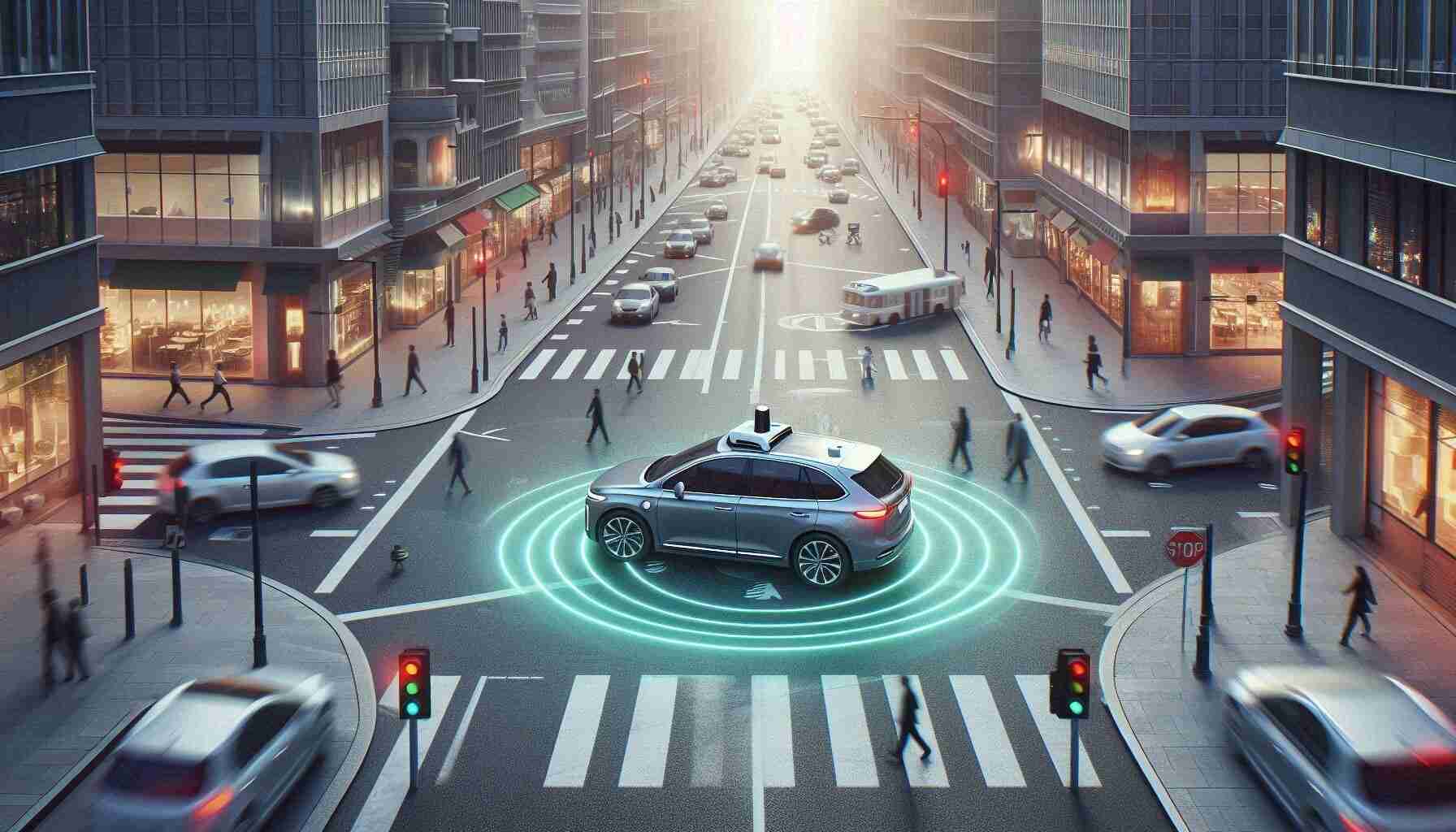
Self-driving cars have emerged as one of the most exciting advancements in automotive technology, promising a future where vehicles operate without human intervention. While proponents highlight benefits such as reduced traffic accidents and increased mobility for those unable to drive, there are significant disadvantages of self driving cars that must be critically examined. This blog TechRipple will explore these disadvantages, particularly focusing on safety risks, while also discussing the self driving cars pros and cons, the limitations of self driving cars, and how these vehicles can serve self driving cars for elderly and disabled individuals.
Understanding Self-Driving Cars
Self-driving cars, or autonomous vehicles, utilize a combination of sensors, cameras, and artificial intelligence (AI) to navigate and operate without human input. Autonomous vehicles are categorized by the Society of Automotive Engineers (SAE) into six automation levels, which range from Level 0 (no automation) to Level 5 (complete automation). Currently, most vehicles on the road feature Level 2 automation, where the vehicle can assist with driving tasks but still requires human oversight. As we move towards higher levels of automation, understanding the implications of these advancements becomes crucial.
Safety Risks Associated with Self-Driving Cars
Machine Errors and Failures
One of the most pressing disadvantages of self driving cars is the potential for machine errors. While self-driving technology aims to reduce human error—responsible for approximately 94% of traffic accidents—machines are not infallible. Software glitches or sensor malfunctions can lead to dangerous situations on the road.
For instance, a study found that self-driving cars were involved in nearly 400 crashes within a short time frame during testing phases. These incidents highlight the risks associated with relying solely on technology for navigation and decision-making in complex driving environments.
Moreover, machine learning algorithms that power self-driving systems learn from vast datasets. If these datasets contain biases or inaccuracies, the vehicle’s decision-making process can be adversely affected. For example, if a self-driving car is trained primarily on urban driving scenarios, it may struggle to handle rural environments effectively.
Cybersecurity Threats
Another significant concern is cybersecurity. As self-driving cars become more connected through networks and cloud services, they become vulnerable to hacking. Cybercriminals could potentially take control of a vehicle or access sensitive personal data stored within it.
The interconnected nature of autonomous vehicles means that a single breach could affect multiple vehicles simultaneously, leading to catastrophic outcomes on busy roads. This risk underscores one of the major disadvantages of self driving cars: their reliance on technology that can be exploited.
In addition to hacking threats, concerns about data privacy arise. Autonomous vehicles collect vast amounts of data about their passengers’ habits and preferences. Without stringent data protection measures, this information could be misused by third parties or lead to privacy violations.
Moral and Ethical Dilemmas
Self-driving cars also face moral dilemmas when programmed to make decisions in emergency situations. For example, if an accident is unavoidable, should the car prioritize the safety of its passengers or pedestrians? These ethical questions highlight some disadvantages of self driving cars, complicating their development and raising concerns about accountability.
The “Moral Machine” project by MIT illustrates how different cultures have varying opinions on such dilemmas, making it challenging to create a universally accepted programming standard for autonomous vehicles. The implications are profound: who is responsible when an autonomous vehicle causes harm? Is it the manufacturer, the software developer, or perhaps even the owner?
The Limitations of Self-Driving Cars
Technological Limitations
Despite advancements in AI and machine learning, there are still limitations in how self-driving cars perceive their environment. For instance:
- Weather Conditions: Heavy rain or snow can impair sensor functionality.
- Complex Scenarios: Unpredictable situations—like a child running into the street—can confuse autonomous systems.
- Road Conditions: Poorly maintained roads with potholes or debris can pose challenges for navigation systems that rely heavily on clear lane markings and road signs.
These technological limitations contribute to the overall disadvantages of self driving cars, as they may not react as effectively as human drivers in certain scenarios.
Additionally, many current autonomous systems rely heavily on predefined maps for navigation. In dynamic environments where road conditions change frequently—such as construction zones—these maps may quickly become outdated or inaccurate.
Infrastructure Challenges
Many places lack the infrastructure necessary to accommodate completely driverless vehicles. For instance, numerous roads lack clear signage or lane markings required for self-driving technology to function optimally. These limitations underscore significant disadvantages of self driving cars, as they rely heavily on well-maintained environments. Additionally, traffic signals may not communicate effectively with autonomous systems, creating potential hazards and increasing the risk of accidents.
As cities evolve towards smarter infrastructures equipped with necessary technologies (like V2X communication), it will take time and investment to ensure that self-driving cars can operate safely within existing environments.
Moreover, there is often a lack of standardized regulations governing the operation of autonomous vehicles across different regions. This inconsistency can lead to confusion among manufacturers and users alike regarding what is permissible and what isn’t.
Self Driving Cars Pros and Cons
While this article focuses on the disadvantages of self driving cars, it’s essential to acknowledge their potential benefits:
Pros
- Reduced Human Error: With advanced sensors and AI, these vehicles can potentially decrease accidents caused by distracted or impaired drivers.
- Enhanced Accessibility: For people who are too old or disabled to drive, self-driving technology may offer mobility options.
Cons
- Safety Risks: As discussed earlier, machine errors and cybersecurity threats pose significant risks.
- Job Displacement: The rise of autonomous vehicles may lead to job losses in transportation sectors.
Additionally, there are concerns about how widespread adoption might affect urban planning and public transportation systems. If people begin relying solely on personal autonomous vehicles instead of public transit options, it could lead to increased congestion in urban areas.
Self Driving Cars for Elderly and Disabled
One promising application of self-driving technology is its potential benefits for elderly and disabled individuals who may struggle with traditional driving methods. Autonomous vehicles could offer increased independence by providing reliable transportation options without requiring a human driver.
However, even in this context, there are challenges:
- Trust Issues: Many elderly individuals may be hesitant to trust technology over human drivers.
- Accessibility Concerns: Not all self-driving vehicles are designed with accessibility features necessary for disabled users.
- Training Needs: Users may require training or familiarization sessions before they feel comfortable using an autonomous vehicle independently.
Furthermore, while self-driving cars could enhance mobility for elderly individuals who can no longer drive safely due to health issues or cognitive decline, the economic and geographic accessibility of such technology remains a significant concern. This highlights another disadvantages of self driving cars, as the high cost and limited availability may exclude the very groups that could benefit the most from this innovation.
Public Perception and Acceptance
Public perception plays a crucial role in determining how quickly self-driving technology is adopted. Many people remain skeptical about fully autonomous vehicles due to safety concerns stemming from media coverage of accidents involving these technologies.
Trust Building Measures
To address these concerns:
- Transparency: Manufacturers must be transparent about how their systems work and what safety measures are in place.
- Education Campaigns: Public education campaigns can help demystify autonomous technology and build trust among potential users.
- Pilot Programs: Implementing pilot programs where individuals can experience riding in self-driving cars under controlled conditions may help alleviate fears.
Regulatory Frameworks
Establishing robust regulatory frameworks will also be essential in fostering public confidence in autonomous vehicles. Regulations should focus on:
- Safety Standards: Defining minimum safety standards that all manufacturers must meet before deploying their vehicles on public roads.
- Liability Laws: Clarifying liability laws regarding accidents involving self-driving cars will help determine responsibility in case something goes wrong.
These measures will not only enhance safety but also encourage public acceptance by demonstrating that rigorous oversight exists over this emerging technology.
Economic Implications
The introduction of self-driving cars has far-reaching economic implications that extend beyond individual consumers. While some argue that these vehicles could reduce costs associated with accidents and insurance premiums due to fewer collisions caused by human error, other economic factors highlight notable disadvantages of self driving cars:
Job Displacement Concerns
One major concern surrounding the rise of autonomous vehicles is job displacement within sectors reliant on human drivers—such as trucking, taxi services, and public transportation. According to some estimates, millions of jobs could be at risk as companies adopt automated solutions to reduce labor costs.
This shift raises critical questions about workforce retraining programs for displaced workers and how society will adapt to changes in employment landscapes driven by technological advancements.
Impact on Insurance Industry
The insurance industry will also undergo significant changes as self-driving cars become more prevalent. With fewer accidents attributed to human error, traditional auto insurance models may need reevaluation:
- Liability Shifts: Determining liability in accidents involving autonomous vehicles will require new policies that address manufacturer responsibility versus driver responsibility.
- Premium Adjustments: Insurance premiums might decrease overall; however, new types of coverage may emerge specifically tailored for automated technologies.
These shifts underscore another layer within the discussion surrounding the disadvantages of self driving cars, emphasizing how interconnected industries must adapt alongside technological advancements.
Environmental Considerations
While some proponents argue that self-driving cars could lead to reduced emissions through optimized driving patterns and decreased congestion, there are environmental considerations that warrant attention:
Increased Vehicle Miles Traveled
If people perceive autonomous vehicles as safer than traditional ones—leading them to use them more frequently—this could result in increased vehicle miles traveled (VMT). More VMT can lead directly to higher emissions unless coupled with electric vehicle technologies or other eco-friendly solutions.
Urban Sprawl Concerns
Moreover, if individuals feel less burdened by driving responsibilities due to automation capabilities provided by these technologies—there’s potential risk toward encouraging urban sprawl as people choose homes further away from city centers where they work since commuting becomes less stressful than before.
Addressing these environmental impacts requires careful planning from policymakers who must consider both immediate benefits offered by innovations like automated transport alongside long-term sustainability goals aimed at reducing carbon footprints across communities globally.
Conclusion
In conclusion, while self-driving technology has great potential benefits—particularly for vulnerable populations like the elderly and disabled—it is crucial that stakeholders comprehensively address its numerous challenges before widespread adoption occurs. The significant disadvantages of self driving cars, including safety risks related to machine errors, cybersecurity threats, ethical dilemmas, technological limitations, and infrastructure challenges must be carefully considered as we navigate this evolving landscape.
For further insights into how society views this transformative technology and its implications for our future transportation systems, you can visit MIT’s Moral Machine Project, which explores ethical dilemmas faced by AI systems like those used in self-driving cars.





